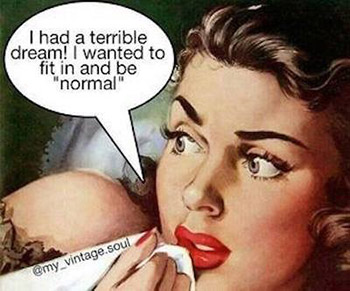How do gender identity and BDSM collide, and does one influence the other? Obviously, we know that all dominants are not male and all submissives are not female, but could our BDSM roles influence our gender identity, and could our gender roles influence our BDSM identity?
It’s important before we start thinking about it to get some definitions out of the way, so that the terms we’re discussing are clear. I’ve given the references for these at the end of the article.
WHAT DO WE MEAN BY BDSM?
BDSM is an umbrella terminology for “Bondage/Discipline (B/D), Dominance/submission (D/s), Sadism/masochism (S/m)” for an overarching conception of social practices. BDSM experience is further conceptualized as “the consensual use of physical and/or psychological stimulation involving power and/or pain in generates sexual and/or nonsexual satisfaction.
(Wiseman, 1996)The concept of BDSM should not be understood in a singular sense. As it constitutes many different sub cultures and communities underneath the general concept of BDSM; in accordance to personal interests, fetishes, genders and sexualities.
(Graham, Butler, McGraw, Cannes, & Smith, 2015), (Coon Sells, 2013), (Jolene Sloan, 2015).
WHAT IS GENDER, GENDER IDENTITY AND GENDER EXPRESSION?
Gender is a general term, not necessarily about the genitals between your legs but to describe a gendered role in society, depending on the society and culture. It’s important to make the distinction, because many people think of a male/female dichotomy and expect that it’s universal that all cultures see the same meaning in what it means to be one or the other. That leaves out a spectrum of identities (and meanings). The concept and response to any perception of gender is socially and culturally constructed. In many classic mythologies, being “both-gendered male and female” was seen as highly reputable and powerful.
柏拉圖《會飲篇》:宙斯將人切成兩半,男性成為兩個男性、女性成為兩個女性、同時具備兩種性格的成為男性與女性,從而相互追逐著。
According to Greek mythology, humans were originally created with four arms, four legs and a head with two faces. Fearing their power, Zeus split them into two separate parts, condemning them to spend their lives in search of their other halves.
…and when one of them meets the other half, the actual half of himself, whether he be a lover of youth or a lover of another sort, the pair are lost in an amazement of love and friendship and intimacy and one will not be out of the other’s sight, as I may say, even for a moment…
Plato, The Symposium
Gender Identity however, is probably best defined as “one’s sense of oneself as male, female or transgender” (American Psychological Association, 2006). When one’s gender identity and biological sex are not congruent, the individual may identify as transsexual or as another transgender category (cf. Gainor, 2000).
So, gender identity can be thought of as a negotiation process of one’s self with one’s societal and cultural environment. It is a process of exploration, experimentation and acceptance, both internally and externally.
In other words, I may be a male, but my gender could be fluid as both feminine and masculine, my sexuality may be homosexual but my gender can be strong feminist or soft masculine.
And the thing with gender identity is that it’s not only subjective to the individual and his societal background and up-bringing, it’s also fluid. We’re very influenced by our childhood and societal teachings early in our life, but as we gain experiences, experiment and explore, we discover things about ourselves or discover the freedom of being able to express things about ourselves that we’ve previously felt unable to.
In addition, gender expression may be considered as “…way in which a person acts to communicate gender within a given culture; for example, in terms of clothing, communication patterns and interests. A person’s gender expression may or may not be consistent with socially prescribed gender roles, and may or may not reflect his or her gender identity” (American Psychological Association, 2008, p. 28).
In simple words, gender identity is who we believe we are internally, and gender expression is how we decide to express ourselves outwardly.
It’s that interplay of gender identity and gender expression that we use to negotiate our gender role within the society we live in.
GENDER IDENTITY AND THE POWER EXCHANGE OF DOMINANT/SUBMISSIVE
 Your gender identity and sexuality is part of you, and part of your D/s dynamic. If you are a strong female, you may take on the role of being a powerful Dominatrix, and if you are a soft male you may find the role of being a cuckold or pet satisfying.
Your gender identity and sexuality is part of you, and part of your D/s dynamic. If you are a strong female, you may take on the role of being a powerful Dominatrix, and if you are a soft male you may find the role of being a cuckold or pet satisfying.
There is a lot of fluidity here, and as we journey and explore further into BDSM we discover more and more about ourselves. Many people change the role they feel most comfortable with, or sacrifice for their Owner/Master.
We are all in the best position to understand our own gender identity and our own struggles and negotiation with our societal gender norms. Everyone has some degree of autonomy in deciding who they want to become or who they naturally are.
Gender identity is part of who we are, and our dominance and submission is also part of who we are. So, it’s possible that our style of Dominance and submission may affect our gender identity, and vice-versa. You may enter a role of Owner and find that it feels right, and find that you become more masculine than you were, or you may enter the role of submissive, and that may lead you to feeling feminine. Perhaps that leads to you wanting to try wearing a bra. Perhaps that experience is satisfying and the feeling of submission is satisfying and you want to try being a male.
Please excuse the gendered terms in the above paragraph. I don’t mean to imply that feeling masculine is dominant or feeling feminine is submissive. We all know that’s not true. But what I’m trying to say with that example is that gender identity doesn’t just “leak” into our style of Dominance/submission, it IS part of it.
We’re all constantly negotiating our gender identity with our societal norms and with our own desires and self-constraints. No rules are imposed on the way we decide on the outcome. That’s not to say that the outcome is of “no importance” or that it will not influence, or be influenced by, our relationships. The things we decide in one aspect of our identity will affect things in other aspects of our identity, and that’s how we grow and find our own uniqueness in the world.
REFERENCES
• Coon Sells, T. G. (2013). The Construction of Sexual Identities in an Online Gay, Lesbian, and Bisexual Bulletin Board System. Journal of Human Behavior in the Social Environment, 23(8), 893–907.
• American Psychological Association – Definition of Terms: Sex, Gender, Gender Identity, Sexual Orientation.
• Graham, B. C., Butler, S. E., McGraw, R., Cannes, S. M., & Smith, J. (2015). Member Perspectives on the Role of BDSM Communities. The Journal of Sex Research, 1–15.
• Jolene Sloan, L. (2015). Ace of (BDSM) clubs: Building asexual relationships through BDSM practice. Sexualities, 18(5-6), 548–563.
• The Symposium Quotes
• Wiseman, J. (1996). SM 101: A realistic introduction.

Use of Plato is incorrect. We live in an age where separations, breakups and divorces are commonplace. Plato suggests two halves meeting and not well, splitting up.